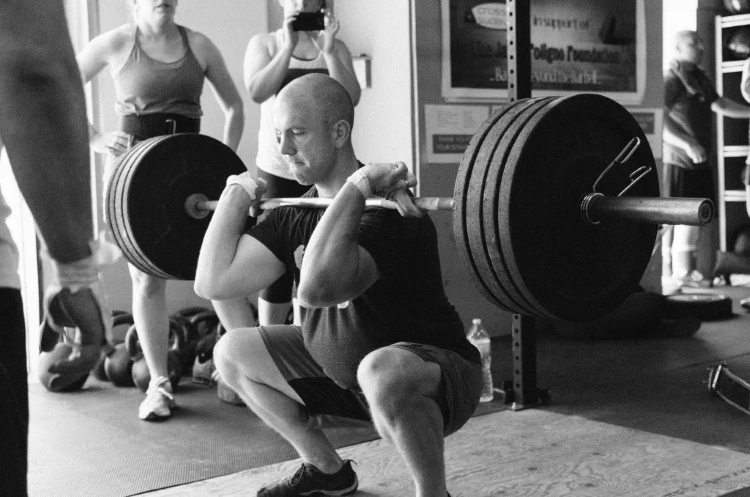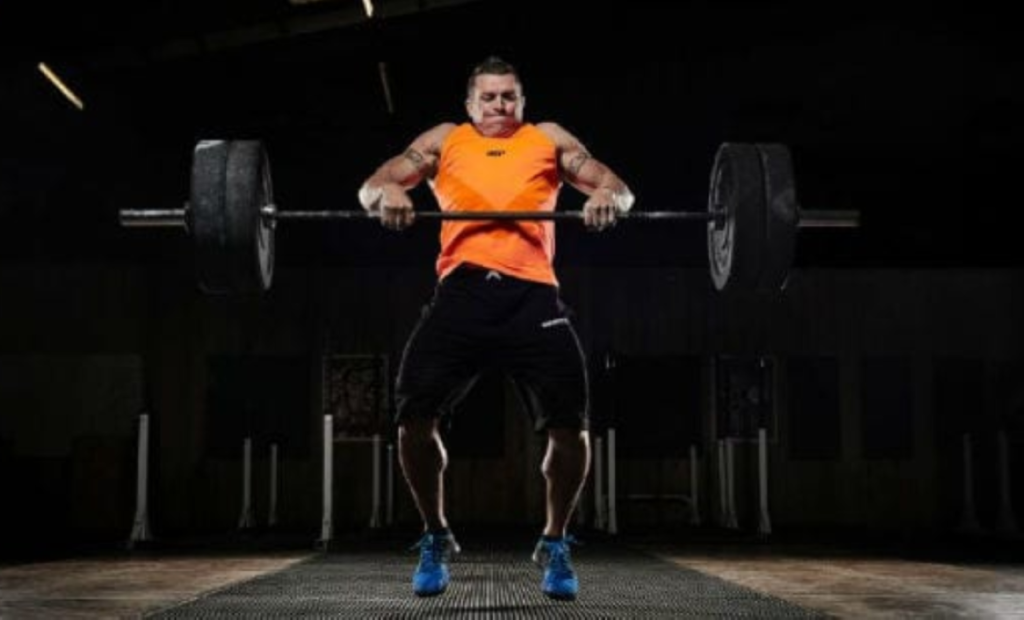Strength training for speed is a topic that I always get questions about. Athletes want to know if they are performing the right exercises, how often they should train and how much they should lift. These are all legit questions, however strength training and workouts for speed are more complicated than that, and certainly includes more than simply lifting weights in the gym.
Everyone within the sporting world would like to be faster. Whether its athletes on the track, footballers on the pitch or basketball players on the court, all athletes can highly benefit and increase their sporting performance by having this ability.
Therefore it’s important to understand what training procedures you need to have in place to allow for optimal adaptation of speed. In this article we will look at different types of strength training, why each type is beneficial for increasing speed and workouts for speed.
Maximum Strength

Maximum strength training increases relative strength and is what I like to call the athletes ‘base strength’. This training involves the athlete working at submaximal efforts which will help prepare the body for more intense, explosive training later on in the season by developing muscle and connective tissue tolerance.
The length of this period of training will vary for athletes depending on your training age (see above section to determine this). If you are a beginner, then this stage is often longer as you need more time to build your strength (develop your base strength), whereas advanced level athletes will be able to progress quicker and begin to focus more on exercises with more sport specific transfer.
This stage is usually carried out pre season or during the early stages of a season. We use it as our athlete’s first strength training phase. However,If you are new to resistance training, then it’s recommended that you start of with a maximum strength program regardless of what stage you are at in your annual season. There’s no point trying to attempt more explosive exercises if you can’t perform technically sound max strength exercises such as the Barbell Back Squat and the Deadlift.
This stage of the training has no specific sport carryover with the focus being on neural adaptations. It’s highly associated with hypertrophic gains and will prepare an athlete for more explosive work. The advantageous effect of this may depend on your sport (a rugby player may wish to increase their mass, however a 200m sprinter will want to stay lean). If an athlete comes in a bit heavy after this stage, coaches and athletes usually spend some time adjusting this in the next phase.
The type of exercises that you need to include during this phase are multi joint compound movements. When performing an exercise, you should focus on keeping the eccentric phase of the lift slow and controlled. The concentric phase of the lift should be performed quicker with force. This is most favourable to the rate of force development. As you being to improve and have a good structural balance, look to increase the weight used for each exercise. It’s also important to make sure you perform all exercises with a good technique and in a safe manner. Never compensate form so that you can increase the weight!
Examples of maximum strength training exercises:
- Back squat
- Front squat
- Deadlift
- Nordic curls
- Lunge
- SB hamstring curl
Explosive Strength
Although maximum strength is an important aspect of an athlete’s training, when looking to improve your sprinting ability, or short burst of pace, it’s important to focus on applying force rapidly, rather than focusing on the maximum amount of force that you can supply.
Explosive exercises are highly used during strength training to increase speed as they require the athlete to perform accelerated actions. This requires the athlete to continue accelerating throughout the movement until the point of release or take off.
During this stage, athletes are able to improve their power production through using explosive movements under heavy loads. Due to the heavy loads moved and high speed, training facilitates a higher threshold of motor units. These exercises have a higher muscle activation, force, power and concentric velocity than the previous maximum strength exercises we spoke about.
Remember that before attempting the exercises in this phase it is important that you have a good base strength and sound technique. Don’t start performing exercises such as the clean or snatch if you cannot execute a sufficient Squat or Deadlift. The exercises here are technically more demanding so it it’s even more important that you’re able to perform them correctly to avoid injury. I recommend getting a coach to evaluate your technique or filming yourself so can look out for any mistakes.
Examples of explosive strength training exercises:
- Power Clean
- Snatch
- Squat jump
- Med Ball toss
- Box jump
- Standing long jump
Reactive Strength
During our training, reactive strength will come in a little later but will actually crossover with our explosive training (for example, Mon: explosive strength, Thurs: reactive strength). At this point it’s unlikely that we’ll be performing any maximum strength sessions (unless the athlete is a beginner).
Our reactive strength sessions emphasise movements and exercises that most closely resemble sprinting with the focus being on minimal ground contact time. These exercises will have the highest carryover into your sprinting performances on the track, field or court.
With theses exercises we are trying to mimic the force-velocity and movement pattern characteristics of sprinting. We can achieve this through using training aids such as weighted vests, sleds, medicine balls etc.
Plyometrics
One great way to employ this training is through the use of plyometric drills. These drills mostly involve performing bodyweight jumping exercises and are a fantastic way for you to increase your power. Again, these exercises have direct crossover to your sporting performance as you are learning to exert maximum force in the minimum amount of time.
Plyometric training is usually performed at high intensities and is not always suitable for an athlete. Suitability will depend on training age, ability and fitness levels. There are however lower intensity exercise that can be performed as an introduction to plyometrics for beginners.
It’s important that you select the correct type of exercises for your program. Some of the exercises can be extremely stressful on the nervous and skeletal system and should only be performed by well conditioned athletes. Again, if you’re untrained, go back to the phase 1 maximum strength exercises and form a strong bases before attempting plyometric training.
When performing plyometric exercises:
- You only want to produce high quality reps, performed with maximal effort. If the quality of the reps diminishes then stop with the sets
- Maximal effort/explosive movements
- Make sure exercises performed allow for minimum contact time.
- These exercises can be highly stressful. Bounding and jumping exercises can be especially stressful for your shins. Make sure you perform plyo exercises on a soft surface, sprung floor or grass work well. Just make sure the ground in which you are performing on is not too hard. You don’t want to pick up any unnecessary injuries that could otherwise be avoided.
Examples of reactive strength training exercises:
Exercise examples:
- Ankiling
- Low hurdle jumps with bounce
- Hops
- Sprint bounding
- Vest sprints
Read the rest of the article at thespeedproject.com.

